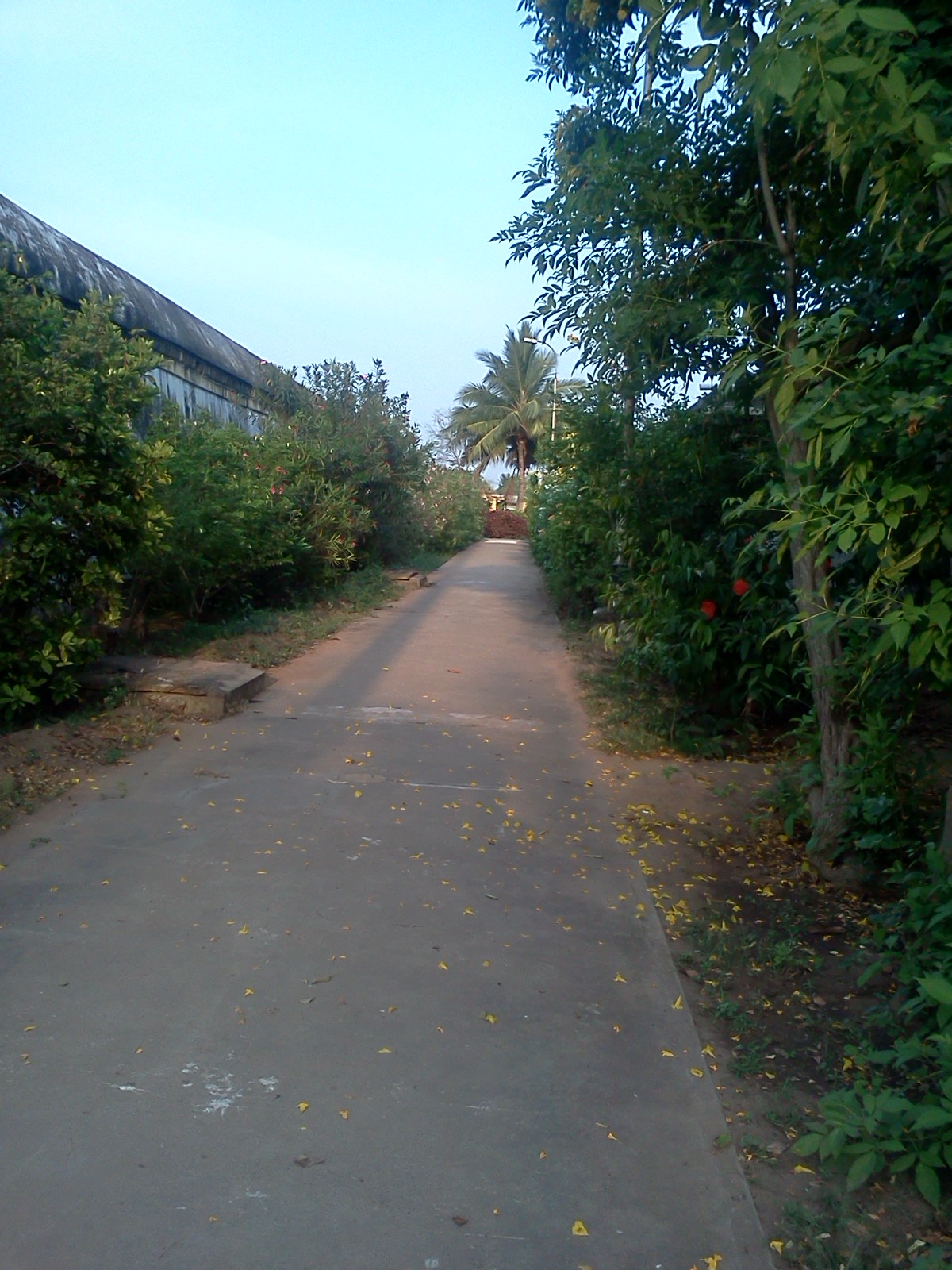My Spiritual Travelogue
Sri Garparakshambigai Amman Temple Darshan - Thirukkarugavur
Recently, we visited Thirukkarugavur for darshan of Sri Mullaivananatha Swami and Sri Karparakshambigai Amman Temple in Thirukkarugavur.
This small town - Thirukkarugavur is situated in Tanjore District of South India within a distance of 6 KM from Papanasam, in between Tanjore and Kumbakonam Main Road, on the banks of river 'Vettar'. Public transport facilities are available to this temple town from Kumbakonam and Tanjore. Also autorickshaws are available from Papanasam. This temple town is also known by other names viz. - 'Madhavi Vanam', 'Mullai Vanam Thirukkarugavur', 'Garppapuri'.
The temple is 460' in length and 284' in breadth. The Rajagopuram is in the eastern side and on the south side there is an entrance. Sri Mullaivananatha Swami sannadhi is situated in the big corridor and on the northern side of it Sri Garpparakshambikai Amman sannadi is there. Both sannadhis have separatre corridors.
Greatness of the Goddess Arulmigu Garbarakshambigai
 |
| Shri Garparakshambigai Amman |
Greatness of the Goddess Arulmigu Garbarakshambigai
Couples yearning for a child have to come in person to this temple, obtain ghee from the counter, light 11 ghee lamp and must do step smearing (Padi Mezhuguthal) in sacred Ambal Sannadhi and pray for their child. After returning to their home they should buy quality ghee for 1 kg and mix them with the sacred ghee obtained from this temple. Before going to bed couples should take a teaspoonful of the ghee for next 48 days. Women should avoid intake of ghee during their periods, while men should continue without break. We advice the couples to recite the mantras which will be given to them in a book form during their visit to this temple. This is a belief that is backed up by the experience of many. Persons who are unable to visit this temple in person can obtain blessed ghee from this temple through post or courier. The details are available with the temple authorities who will provide same on request.
Blessed castor oil for easy delivery:
Pregnant woman in third trimester has to obtain blessed oil from this temple. It is not necessary for the woman to come in person while her husband or any family member can come and obtain the blessed oil. The oil must be applied in the lower abdomen of the woman during pain. It is advised that the woman to recite the mantras for easy delivery.
Persons who are unable to visit this temple in person can obtain blessed oil from this temple through post or courier. The details available with temple office. After obtaining the oil follow the procedure as detailed above.
Punugu sattam
Lord Mullaivananthar is Swayambu i.e, self manifested. Therefore no abishegam is done to him. During Valarpirai pradosham days Punugu Abhishegam (Ablution) is done to Shri Mullaivananathar. Punugu is believed to cure incurable and chronic illness. Punugu prasadam can be obtained either in person or through post.
Abishegams are also performed during these timings - Monday to Thursday: 8.00 a.m. to 4.30 p.m.
Friday, Saturday: 8.00 a.m. only. Sunday: No abishegam is performed. No abishegams are performed in evening on Pradosham days. Similarly no abishegams are performed during festival days.
Pre-bookings are made for abishegams. Devotees are expected to be present ½ hour before abishegam. Delay causes discomfort to other devotees. Temple officials are very helpful in providing neccsary details for performing pooja etc. on request.
The temple has got a beautiful Nandavanam - "Mullai vanam" in outer prahara. It has got various flowering plants in different varieties and it is a feast to our eyes when the plants in full bloom.
In front of the temple main entrance on the eastern side, a beautiful temple tank is there.
Thanga Thottil
In the temple, there is a Thanga Thottil (Golden Cradle) being used for completing the prarthana made by the couple for having blessed them with a baby by the graceful blessings of Shri Garparakshambigai. This is something like a unique way of Thanking Goddess Shri Garbarakshambigai for her benevolence towards the couple by blessing them for having a child. This is known as Thanga Thottil prarthanai. The couple will place the baby in the Thanga Thottil and circumventing the Amman Praharam (corridor) with their child.
Thulabharam:
This is an age old tradition which is followed in many temples. Placing your child in one plate of the weighing scale and balancing the other with goods is called Thulabharam. We accept all kinds of materials like Ghee, oil, food grains, fruits, currency coins, gold, silver etc in Thulabaram.
Navakodi Ghee lamps
All auspicious functions commence with the lighting of the lamp, which is often maintained right through the occasion. Light symbolizes knowledge, and darkness - ignorance. The Lord is the "Knowledge Principle" (Chaitanya) who is the source, the enlivener and the illuminator of all knowledge. Hence light is worshiped as the Lord himself.
The traditional ghee lamp has a further spiritual significance. The ghee in the lamp symbolizes our vaasanas or negative tendencies and the wick, the sin. When lit by spiritual knowledge, the vaasanas get slowly exhausted and the sin too finally perishes.
Taking into consideration the traditional belief, for the benefit of devotees we ask you to light up eleven lamps, if you are praying for pregnancy (one for Shri. Vinayagar, one for the Lord Mullaivananathar and nine for Almighty Shri. Garbaratchambigai) and five lamps for easy delivery (one for Shri. Vinayagar, one for the Lord Mullaivananathar and three for Almighty Shri. Garbaratchambigai).
Those who cannot come in person to light ghee lamps can use the temple service to do so. Lighting ghee lamps up to the number of their age is a common occurrence here. The details have been given in payments page of this website.
Ear boring and Tonsure prayers
Ear boring of the child and tonosuring head can be done in this temple. Temple officials will make necessary arrangements on request.
வாழ்க முல்லைவனநாதரின் பெருமை
வாழ்க கருக்காத்த நாயகியின் அருள்
வாழ்க சீர் அடியாரெல்லாம்.
வணக்கம்





























































